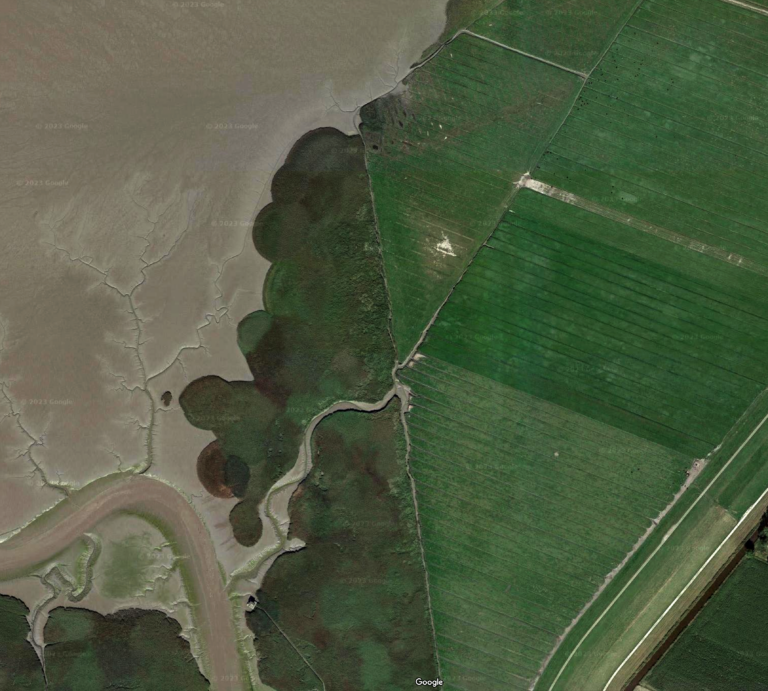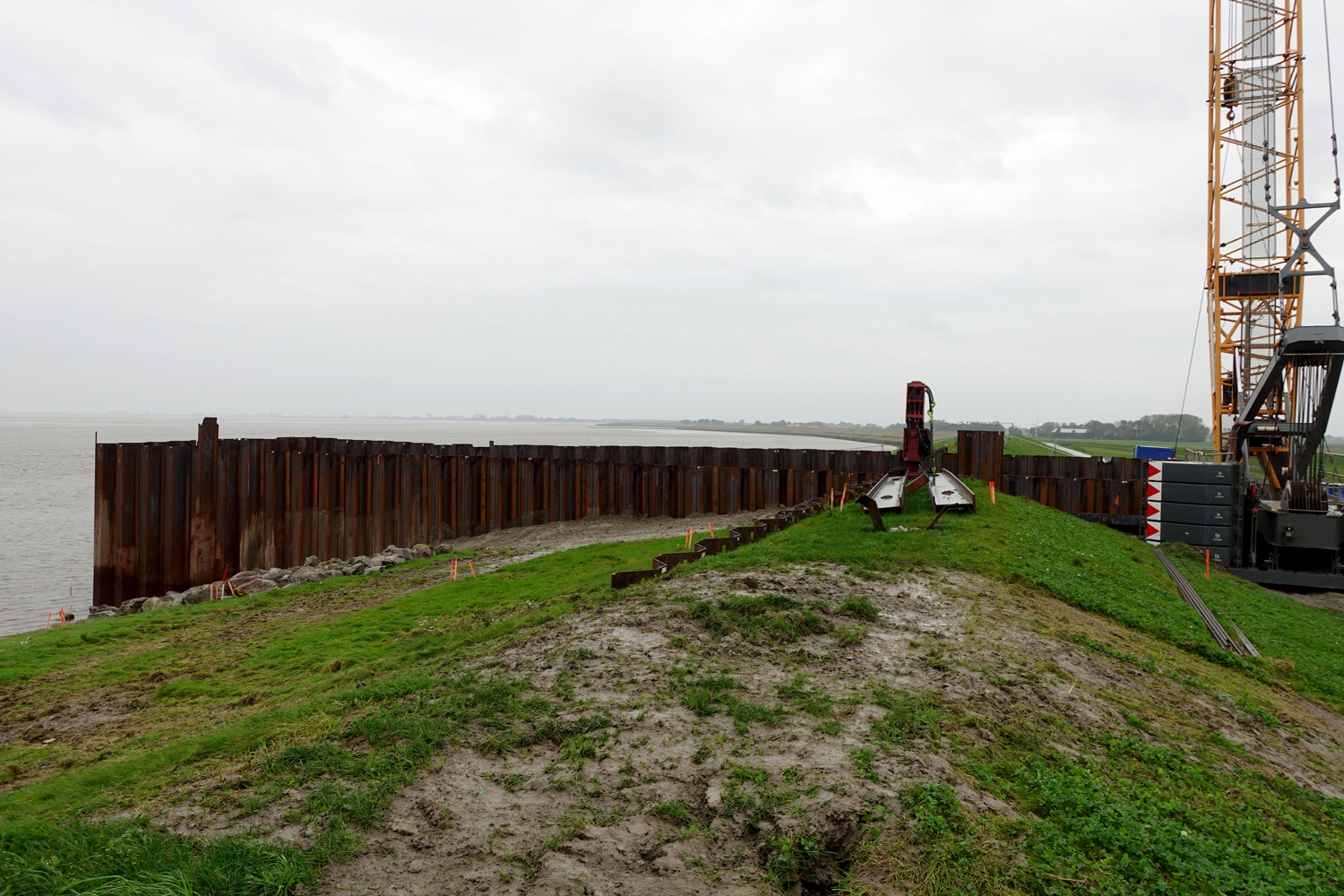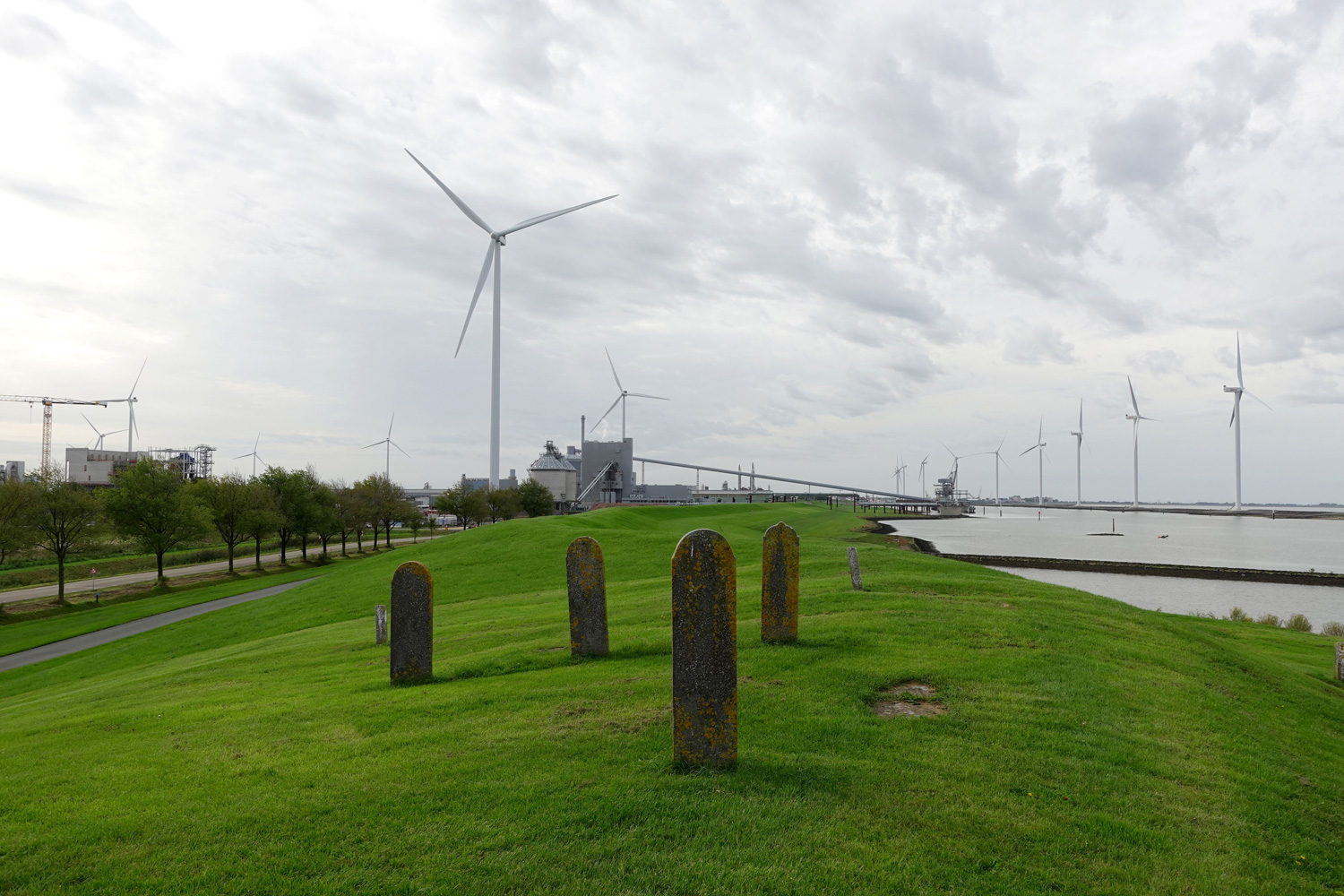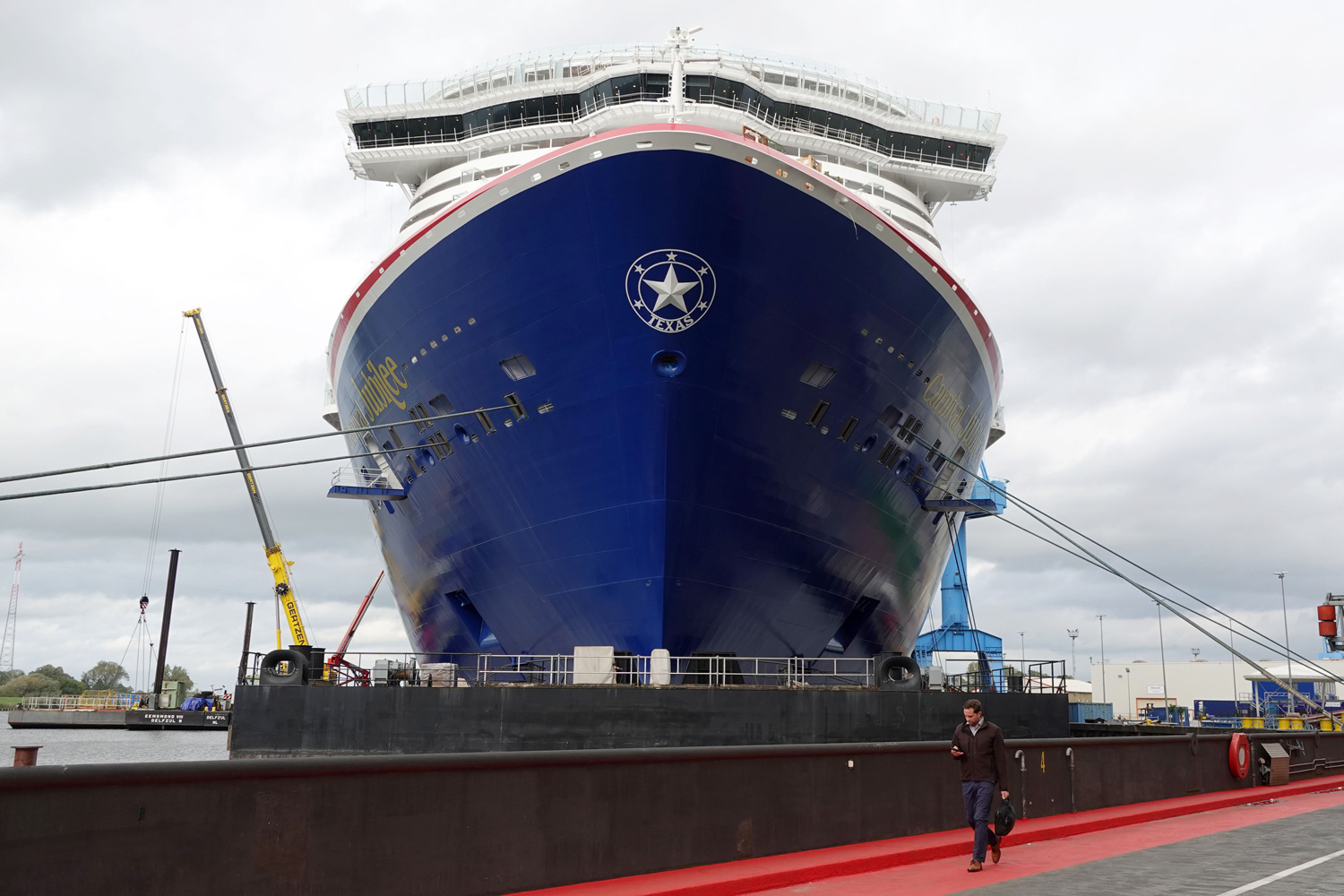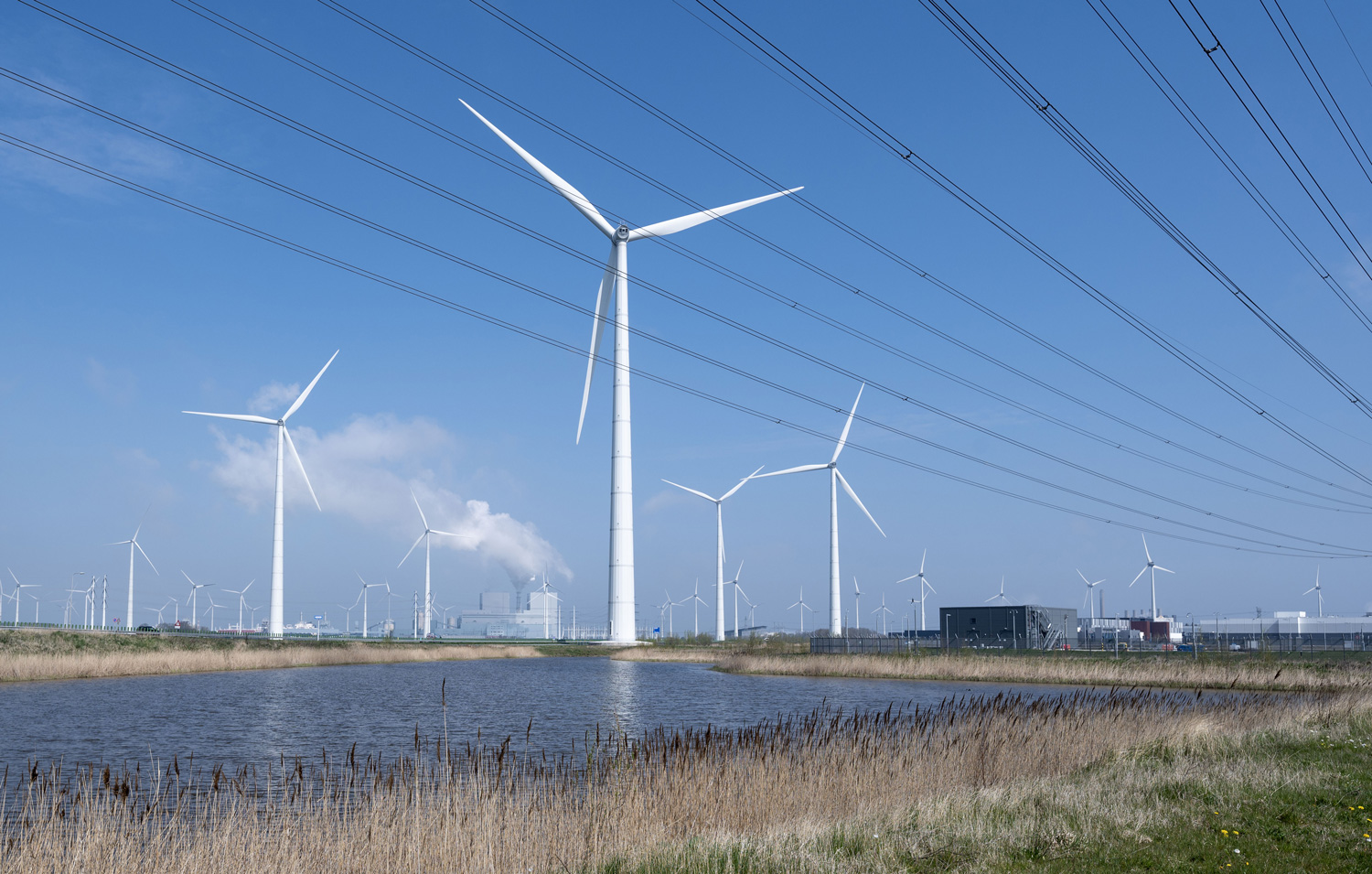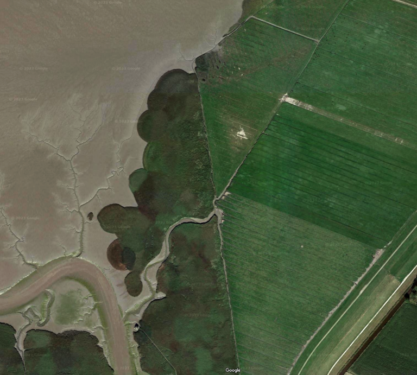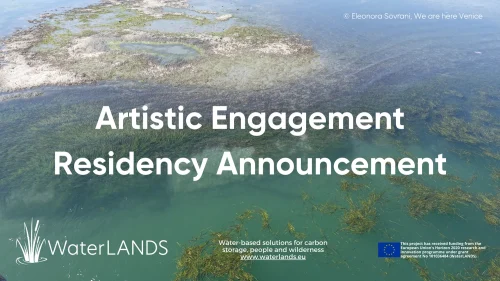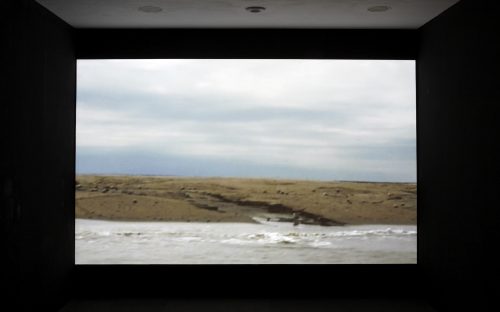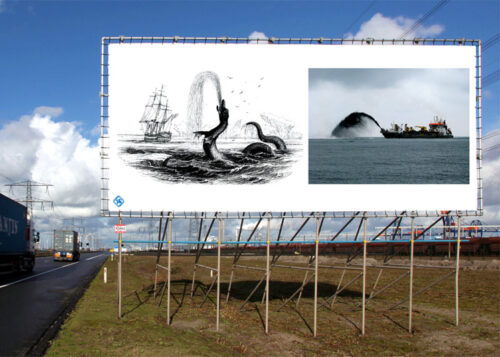WaterLANDS Artistic Engagement Residency
Since 2023: Collective Research Project
This research project reflects on ecological restoration and depoldering in the context of the largest estuary and surrounding landscape in the North of the Netherlands.
The estuary is depleted of life because of the siltation of the water, and engineers are currently developing a more symbiotic approach where nature and culture can live more in harmony in the future along the coastline. In his book ‘The Good Ancestor,’ Roman Krznaric, an Australian philosopher, used the rich history of the construction and maintenance of the dikes in the Netherlands as an example of long-term thinking and intergenerational care.
EU Horizon has funded the selection of six artists to each reflect on one of six different ecological restoration sites in Europe as part of the large-scale and ambitious project ‘WaterLANDS‘ (2023-2026).
 Documentation of the first walk De Waker (The Watcher), October 2024, photo: Wim Dijkman
Documentation of the first walk De Waker (The Watcher), October 2024, photo: Wim Dijkman
Waker Slaper Dromer (Watcher, Sleeper, Dreamer)
‘Waker, Slaper, Dromer’ is a series of three walks named after the poetic names and functions of dike systems in the Netherlands. Here, the ‘watcher’ protects against the outside water first, and the inland ‘sleeper’ catches any breach. Behind this sleeper sometimes lies another ‘dreamer.’ These walks will be organized in 2024 and 2025 as part of Dijkman’s WaterLANDS artist residency. See for more information: www.wakerslaperdromer.nl (Dutch only)
About the Ems-Dollard Estuary
The Ems-Dollard estuary is located on the border between the Netherlands and Germany, where the river Ems meets the Wadden Sea, one of the world’s largest tidal areas. The estuary is renowned for its sandflats, mudflats, and coastal salt marshes. Human actions strongly influence the current shape of the Ems-Dollard estuary. From the Middle Ages, salt marshes were reclaimed by building dikes, and coastal peatlands were drained for agricultural use, resulting in soil subsidence. The size of the estuary has decreased due to the sedimentation of sand and silt, as well as the reclamation of salt marshes along the coast.
The WaterLANDS project is led by University College Dublin, Ireland and brings together 32 organisations from research, industry, government and non-profit sectors in 14 European countries.
The artists part of WaterLANDS working on 6 different sites are: Maria Nalbantova (Bulgaria), Elo Liiv (Estonia), Christine Mackey (Ireland), Claudio Beorchia (Italy), Marjolijn Dijkman (Netherlands), and Laura Harrington and Fiona MacDonald(Feral Practice) (United Kingdom).
More information: WaterLANDS Artistic Engagement Residency & WaterLANDS
wakerslaperdromer (Dutch only)
